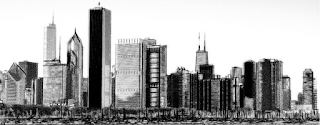Brother Star, Sister Planet
Yeah, I know. It's TRAPPIST-1, not FRANCISCAN-1. But never mind.
NASA has announced that a relatively nearby red dwarf ("only" 42 light-years away), boasts not one, not two, not three, not four, not five, not six, but seven Earth-sized planets in its "Goldilocks zone" ("not too hot, not too cold, but just right"), any or all of which may well feature liquid water and- assuming the right kind of atmosphere- could support life as we know it. And we've known since May that at least some of their atmospheres contain methane, indicating the presence of organic compounds.
But what would life be like on one of the members of this stellar monastery?
To begin with, there's an awful lot of ultraviolet radiation that close to a star like TRAPPIST-1. Either a stout ozone layer or (in the case of marine life) a nice, substantial ocean would be necessary for life to thrive there at all. Alternatively, there are a few biological adaptions that might work. For example, life there might deal with the radiation by developing its own biologically generated glow that would screen radiation out.
ADDENDUM: Turns out I misunderstood the initial press release. While all the planets are Earth-sized, rocky worlds, only three were claimed to be within the "Goldilocks Zone." A fourth has now been added. Even so, this is one very big deal.
NASA has announced that a relatively nearby red dwarf ("only" 42 light-years away), boasts not one, not two, not three, not four, not five, not six, but seven Earth-sized planets in its "Goldilocks zone" ("not too hot, not too cold, but just right"), any or all of which may well feature liquid water and- assuming the right kind of atmosphere- could support life as we know it. And we've known since May that at least some of their atmospheres contain methane, indicating the presence of organic compounds.
But what would life be like on one of the members of this stellar monastery?
To begin with, there's an awful lot of ultraviolet radiation that close to a star like TRAPPIST-1. Either a stout ozone layer or (in the case of marine life) a nice, substantial ocean would be necessary for life to thrive there at all. Alternatively, there are a few biological adaptions that might work. For example, life there might deal with the radiation by developing its own biologically generated glow that would screen radiation out.
ADDENDUM: Turns out I misunderstood the initial press release. While all the planets are Earth-sized, rocky worlds, only three were claimed to be within the "Goldilocks Zone." A fourth has now been added. Even so, this is one very big deal.



Comments